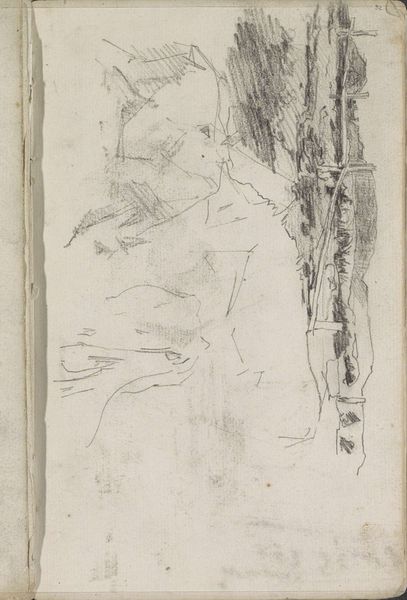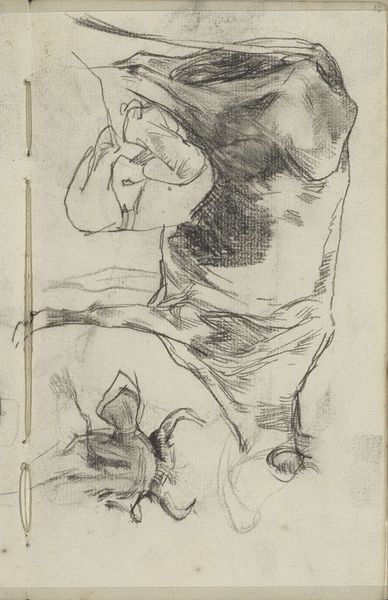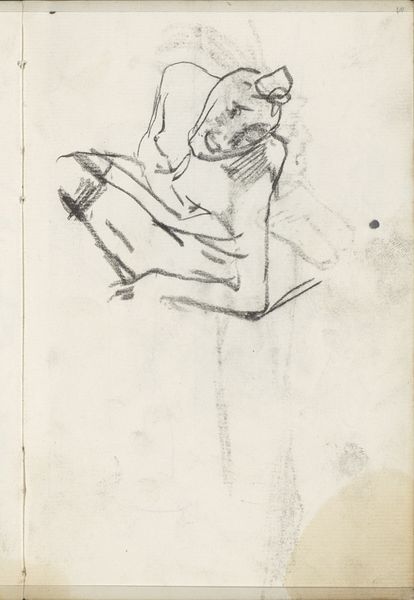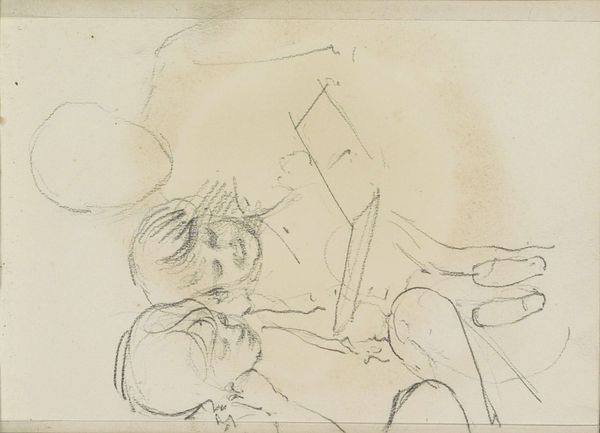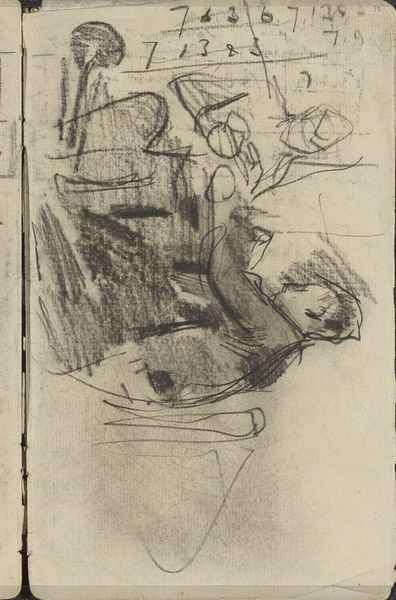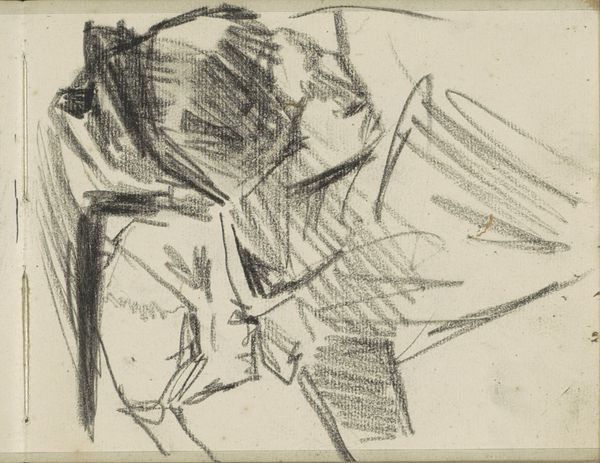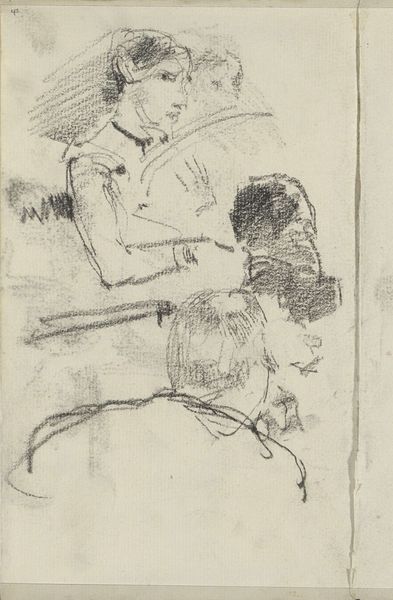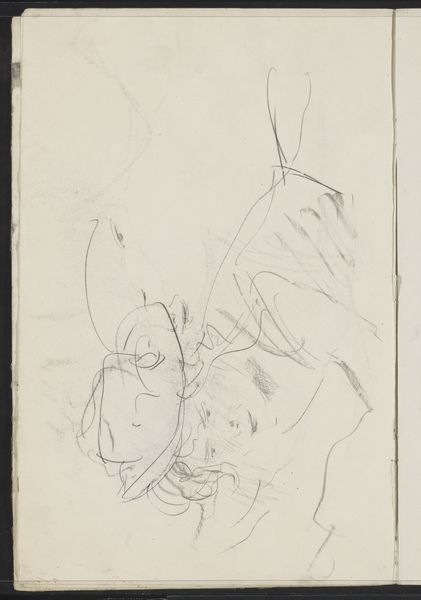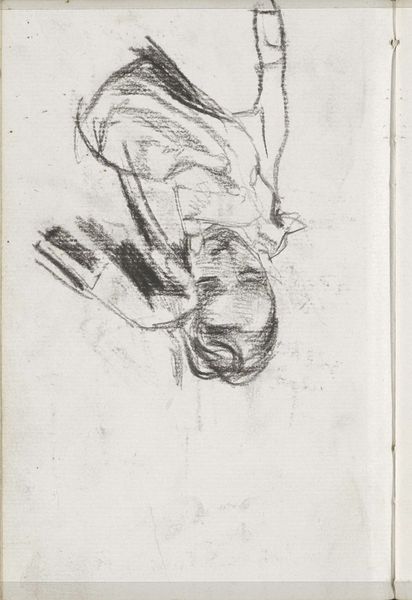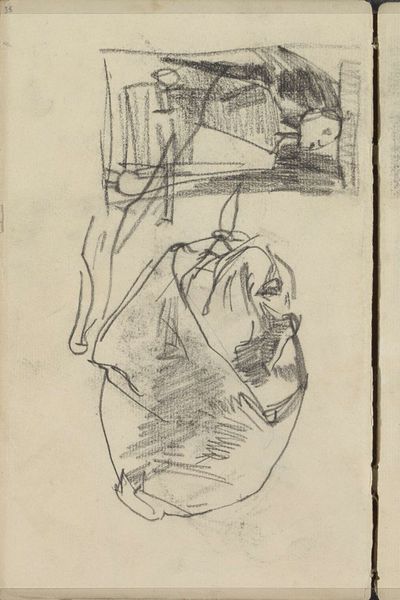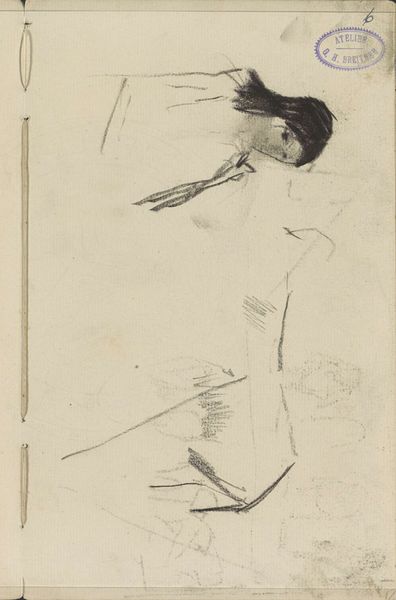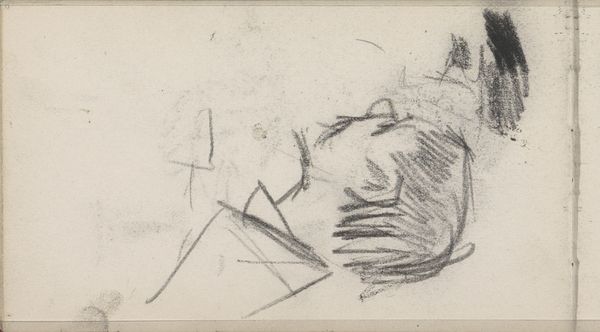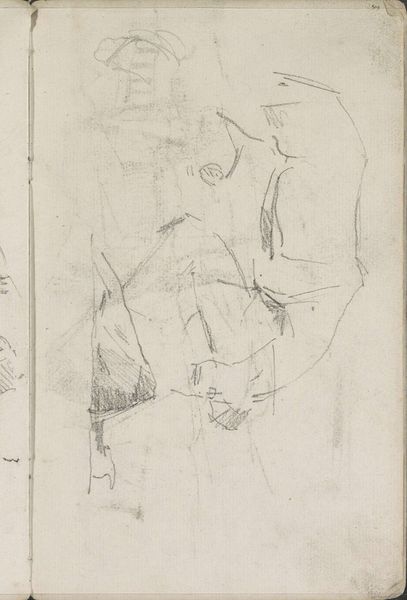
drawing, pencil
#
portrait
#
drawing
#
impressionism
#
pencil sketch
#
child
#
pencil
#
horse
Copyright: Rijks Museum: Open Domain
Editor: This pencil sketch, "Paardenhoofd en een kind," or "Horse's Head and a Child" by George Hendrik Breitner, made sometime between 1883 and 1885, has a dreamlike quality to me. The lines are soft and a bit blurred, like a half-forgotten memory. What stands out to you in this piece? Curator: This seemingly simple sketch invites us into a deeper reflection on the bond between humanity and nature, specifically the symbolic weight of horses. Consider, historically, the horse represented power, nobility, and freedom, and was linked to societal elites, contrasting with the vulnerability of the child. Does Breitner’s juxtaposition challenge or reinforce these cultural archetypes, would you say? Editor: That's interesting. It didn't immediately occur to me, but placing them together like this complicates things. I guess it does ask us to consider the changing relationship between those symbols. Is the child dominating or seeking comfort? Curator: Precisely! Notice the direction they face; the child nestles against the horse. Think about how, in psychological terms, the horse can represent instinct, primal energy, or even a maternal figure, while a child represents innocence. By placing the horse as a maternal protective symbol around the child, does the child come to absorb a bit of those qualities? Editor: That makes me see it in a totally different light. The blurred lines now suggest less of a dream and more like the blurring of the boundaries between them. Almost like they are melding into one. Curator: Yes! This intertwining reminds us that cultural memory is not static. Through images like this, artists both draw upon and reshape our understanding of potent symbols, ensuring continuity and evolution of meaning across generations. This drawing serves as a microcosm for the psychological landscapes we construct and inhabit. Editor: I never considered how the act of depicting could be so transformative in itself. Thanks for pointing out the rich symbolism. Curator: My pleasure, hopefully next time, we can explore together what that means for the modern interpretation of Breitner’s symbols!
Comments
No comments
Be the first to comment and join the conversation on the ultimate creative platform.
